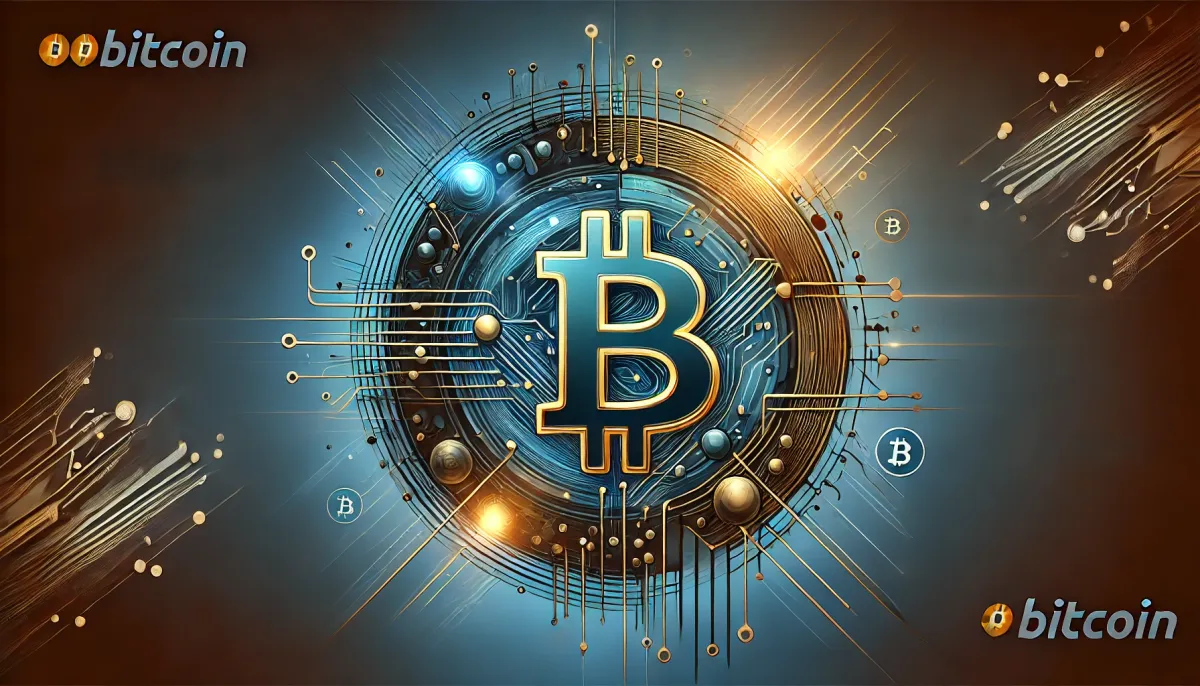Harnessing Stranded Energy for Bitcoin Mining
The September 28, 2020 episode of Nic Carter's On The Brink podcast with Chase Lochmiller drew focus to the, at the time, new concept of turning wasted energy into a financial asset.

Briefing Notes
My 'briefing notes' summarize the content of podcast episodes; they do not reflect my own views. If you have comments about this briefing note, please leave a comment below (requires signing up for a free blog subscription). Note that some of the podcast episodes I summarize may be sponsored: don't trust, verify, if the information you are looking for is to be used for decision-making.
Summary
The September 28, 2020 On The Brink podcast episode with Chase Lochmiller, CEO of Crusoe Energy Systems, reveals how his company turns stranded natural gas into computational power for Bitcoin mining. By capturing otherwise wasted energy through flare gas mitigation, Crusoe addresses environmental concerns, provides a regulatory compliance solution for oil and gas companies, and opens new avenues for future computing applications. This model not only contributes to emissions reduction but also presents a scalable opportunity for integrating renewable energy sources and driving growth in the digital commodities market.
Note the 2020 broadcast date - this was one of the first podcasts to explicitly describe how Bitcoin mining could prove to be an environmental asset.

Take-Home Messages
- Stranded Energy Utilization: Crusoe transforms stranded natural gas into profitable computing power, turning a waste product into financial gain.
- Environmental Compliance: The company's model aids oil and gas firms in reducing emissions and adhering to state-level environmental regulations.
- Sustainable Bitcoin Mining: Crusoe's approach helps reframe Bitcoin mining as a tool for sustainability, rather than an environmental threat, by utilizing wasted energy.
- Future Computing Applications: Beyond Bitcoin mining, Crusoe's technology has potential applications in energy-intensive industries like AI and graphics rendering.
- Digital Commodities Market Growth: Crusoe’s use of decentralized computing power positions it to capitalize on emerging digital commodity markets, such as compute and storage.
Overview
Chase Lochmiller’s conversation with Nic Carter delves into the innovative strategy employed by Crusoe Energy Systems to mitigate gas flaring in the oil and gas industry. By capturing stranded natural gas, which would otherwise be burned as waste, Crusoe powers mobile data centers that mine Bitcoin. This solution not only addresses regulatory compliance issues for oil and gas companies but also helps reduce harmful emissions.
Crusoe’s success stems from its ability to offer an efficient and profitable method for repurposing wasted energy. Lochmiller explains how this model enhances operational efficiency while turning a cost burden—flaring—into a source of revenue. This innovation aligns with growing public and regulatory demands for environmentally sustainable business practices. The company's expertise extends beyond Bitcoin mining, with Lochmiller outlining potential future applications in sectors that require significant computational power, such as artificial intelligence and graphics rendering.
The conversation also highlights the challenges facing the Bitcoin mining industry, particularly regarding the fluctuating price of Bitcoin and the slowing rate of ASIC innovation. Crusoe mitigates these risks through financial hedging strategies and by focusing on maintaining a competitive operating cost. Lochmiller’s vision for Crusoe goes beyond Bitcoin, with ambitions to lead in digital commodities markets, where computing and storage power are commoditized in the same way as physical goods.
Stakeholder Perspectives
- Oil and Gas Companies: Crusoe provides a profitable solution to manage flare gas, enabling these companies to comply with state regulations while creating a new revenue stream.
- Environmental Regulators: This model offers a pathway to emissions reduction, aligning with environmental policy objectives and supporting regulatory goals.
- Bitcoin Miners and Investors: Crusoe’s approach presents an opportunity for sustainable Bitcoin mining, mitigating the environmental criticisms of the industry.
- Technology Industry: The potential to apply Crusoe’s energy-efficient computing model to AI and graphics rendering opens new markets for cost-efficient, high-demand computing applications.
Implications
The key insights from this podcast suggest a future where Bitcoin mining and sustainable energy solutions converge. Crusoe’s use of stranded natural gas to mine Bitcoin is a step towards reducing emissions in the oil and gas industry while offering financial benefits to the companies involved. This model provides a win-win situation, addressing both environmental and regulatory concerns. Moreover, the future expansion of this technology into renewable energy markets will further solidify Crusoe’s role in transforming wasted energy into productive computational power.
As energy markets move toward renewable sources, integrating Bitcoin mining with renewable energy offers potential for stabilizing fluctuating energy costs. Crusoe’s vision of commoditized computing power could also drive further innovation across industries that require significant computational resources, providing environmentally sustainable solutions that support global technology growth.
Future Outlook
Crusoe Energy is poised to expand its operations into renewable energy sources, applying its proven model to wind, solar, and hydroelectric power. This integration could help solve the intermittency problems associated with renewables by providing a consistent demand for Bitcoin mining and other computational tasks. As digital commodities like compute power and storage become more important, Crusoe’s expertise in harnessing stranded energy will place it at the forefront of these markets.
Over the next five to ten years, the regulatory landscape will continue to evolve, with governments pushing for stricter environmental standards. Crusoe’s ability to help oil and gas companies achieve regulatory compliance will likely become an even more valuable aspect of its business. Furthermore, the commoditization of digital resources, driven by decentralized computing models like Bitcoin mining, will offer new opportunities for industries that require cost-effective, large-scale computing solutions.
Information Gaps
- How can Crusoe Energy’s model of utilizing stranded energy change public and regulatory perceptions of Bitcoin mining’s environmental impact? Addressing this question will be crucial for Crusoe's future expansion, as public support and regulatory approval are key to driving sustainable mining solutions forward.
- What state-level regulatory changes could further encourage the use of Crusoe Energy’s solutions in mitigating flare gas emissions? Understanding the state-by-state regulatory landscape will help Crusoe navigate complex energy markets and scale its operations effectively across the U.S.
- What financial strategies or instruments can Bitcoin miners adopt to hedge against the risks posed by sharp fluctuations in Bitcoin prices? This question is critical for the long-term financial stability of Bitcoin mining operations, ensuring that companies like Crusoe can thrive despite market volatility.
- How can Crusoe Energy capitalize on the growing market for digital commodities like computation and storage beyond Bitcoin mining? Exploring new markets for decentralized computation will allow Crusoe to diversify its revenue streams and expand beyond the cryptocurrency sector.
- What are the technical and economic challenges involved in expanding Crusoe’s model to include renewable energy sources like wind and solar? Overcoming these challenges will enable Crusoe to broaden its environmental impact and tap into the growing market for renewable energy solutions.
Also see our own publication about Bitcoin mining research priorities for more information on this general topic.
Broader Implications
Stranded Energy Utilization for Sustainable Bitcoin Mining
Crusoe Energy’s model of using stranded natural gas for Bitcoin mining presents a significant shift in how the Bitcoin industry can address environmental concerns. Instead of viewing Bitcoin mining as a drain on global energy resources, Crusoe demonstrates that it can be part of a sustainable energy solution by turning wasted energy into a productive asset. This approach offers Bitcoin a new narrative—one in which the industry contributes positively to emissions reduction and energy efficiency efforts, potentially changing public and regulatory attitudes toward Bitcoin mining.
Impact on Energy and Digital Commodities Markets
The commoditization of computing power, driven by Bitcoin mining’s energy demands, opens up a future where stranded and renewable energy resources can be better utilized across industries. Crusoe’s model introduces the potential for digital commodities like computation and storage to become as critical as physical commodities such as oil or natural gas. As industries like artificial intelligence, graphics rendering, and even scientific research grow increasingly reliant on vast amounts of computational power, Crusoe’s technology could help lower costs and create more sustainable operations.
Integration with Renewable Energy
As renewable energy sources like wind, solar, and hydroelectric power become more prevalent, Bitcoin mining’s decentralized and flexible demand could play a critical role in balancing energy grids. By providing a consistent base load demand, mining operations like Crusoe’s could stabilize the fluctuations in renewable energy production, ensuring that excess energy is not wasted. This integration would help mitigate one of the biggest challenges of renewable energy—its intermittency—while creating a new use case for Bitcoin mining as a grid-stabilizing force.
Shifts in Regulatory and Investment Frameworks
The broader implications of Crusoe’s model suggest that regulatory frameworks and investment strategies may need to evolve to account for Bitcoin’s role in sustainability efforts. Governments and policymakers might begin to view Bitcoin mining as part of a solution to emissions rather than a contributor to environmental degradation, opening new avenues for pro-Bitcoin regulation. Likewise, environmentally conscious investors could see Bitcoin mining in a new light, potentially driving more capital toward projects that combine energy efficiency with financial innovation.
Economic and Technological Diversification
Crusoe’s focus on expanding into other industries like artificial intelligence, graphics rendering, and large-scale computing points to a future where Bitcoin mining technologies can diversify into broader economic sectors (as we are now seeing in 2024). This technological crossover could lead to innovations in how industries manage their computational demands, potentially lowering barriers to entry and reducing costs in fields that are traditionally energy-intensive. By applying the lessons of stranded energy utilization to other digital commodities, Crusoe sets the stage for broader economic impact beyond the Bitcoin ecosystem.




Comments ()